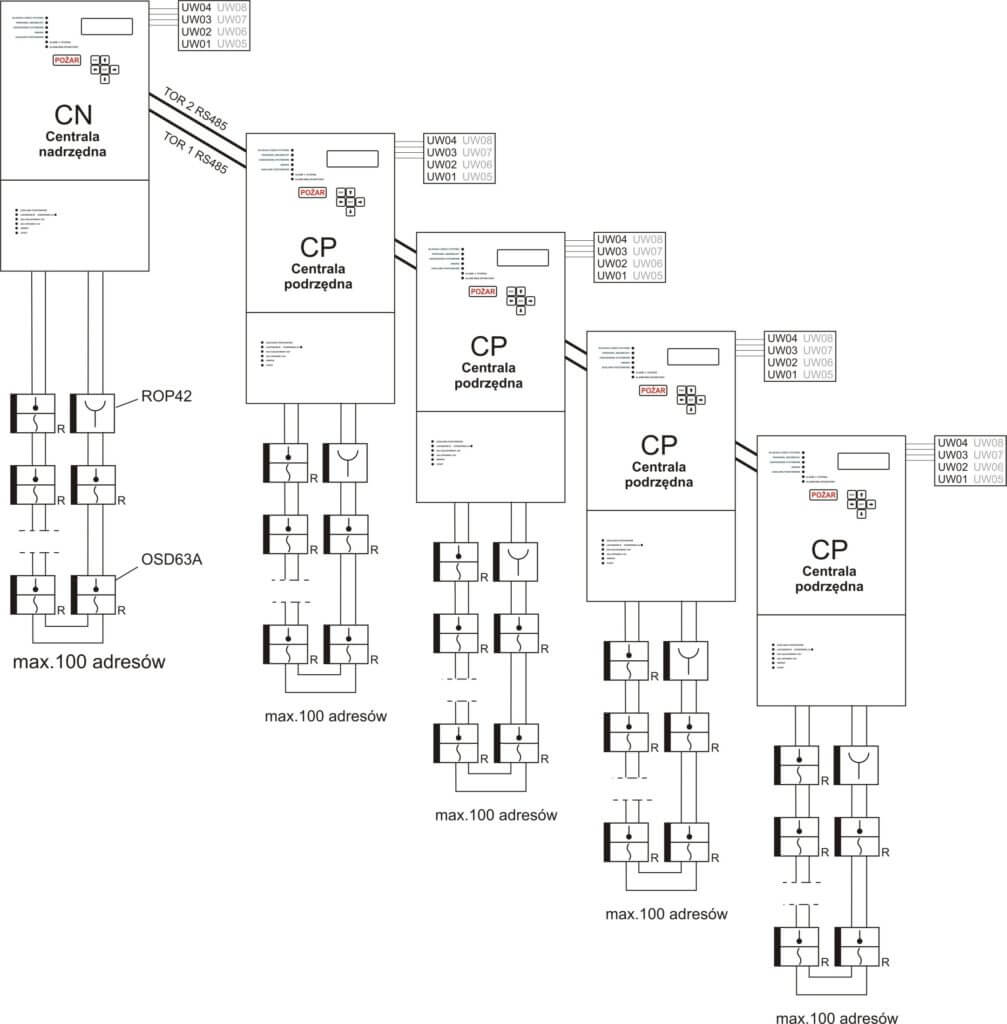Fire Alarm System
The SSP fire alarm system (other names are the fire alarm system or fire alarm signaling, in short SAP) is a set of cooperating elements that detect fire, initiate an alarm, automatically notify the fire brigade or perform other actions aimed at reducing the effects of a fire.
The SSP system is one of the basic security systems, the purpose of which is to protect the life and health of people, as well as the goods stored in facilities.
The SSP system is based on detectors installed in the rooms that react to smoke and/or temperature rise, transmitting information about this fact to the fire control panel, which then informs the service personnel about the threat or alarm, and in the absence of it – the fire brigade and/or activates additional signaling or fire extinguishing devices. Next to the detectors (in the detection line) fire pushbuttons (ROP) can be installed – manual fire warning, used to transmit information to the control panel about a fire noticed by people in its vicinity.
The task of the SSP system built in this way is quick and error-free detection of the emerging fire before it develops and reaches dimensions that are difficult to control. Quick detection of the source of the fire will give you more time to evacuate the building and effectively protect the values stored in it.
The main element of the fire detection and alarm system is the AFS42 control panel.
The control panel supports up to 100 addresses in the detection line (detectors, manual fire call points, input/output modules), enables the connection of signaling devices (optical, acoustic, etc.) and control devices (extinguishing devices, smoke vents, etc.). The AFS control panel has a built-in power supply and space for installing two 12V gel batteries with a maximum capacity of 18Ah. The AHU can work independently, i.e. without service personnel (fully automatic) or with their participation (permanently or periodically).
In addition to signaling a detected fire, the AFS 42 control panel enables the activation of additional signaling or extinguishing devices, as well as the transmission of an alarm signal to the nearest fire brigade.
The OSD63A smoke and heat detectors and the ROP42 manual call points are the elements transmitting the fire signal from the detection line to the control panel.
The OSD63A smoke detector is an optical and thermal detector, i.e. fire identification is carried out by analyzing the loss of air transparency in the detector’s optical chamber and/or a rapid increase in temperature in the detector’s surroundings or its exceeding the set threshold. The detector does not contain radioactive isotopes.
The OSD63A detector is a microprocessor detector with the possibility of configuring many operating parameters using free software operating in the Windows environment.
ROP42 is a fire button that enables manual warning of a noticed fire by people in its vicinity.
All elements working in the line with a digital address can also have a name specifying the location, allowing to precisely determine the place of the hazard.
Diagram of a simple system containing smoke and heat detectors (OSD63) and a manual call point (ROP42)
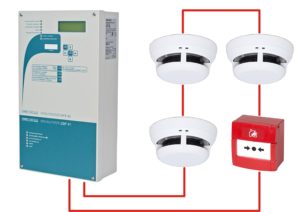
The AFS42 fire detection and alarm system is an addressable system, i.e. it enables precise localization of a fire detected by detectors ( detector) or an alarm triggered by a manual fire button (ROP) and providing this information to the service personnel or notifying the appropriate services.
The AFS42 control panel supports up to 100 addresses placed in a detection line. The line can be a loop or an open line. Smoke/heat detectors (detectors), manual call points (ROPs) and UW devices (input/output devices, i.e. signaling or control elements) can operate in the detection line.
The task of the AFS42 system is to automatically detect fire, activate the alarm and automatically notify the fire brigade or initiate other actions aimed at reducing the effects of fire in the protected facilities.
The AFS42 system can be successfully used both to secure small buildings (single-family houses, company buildings, office buildings, warehouses, garages, etc.), as well as large and extensive facilities, including multi-building ones – thanks to the possibility of building a distributed network, i. working on the network.
The AFS42 system can also work in rail vehicles (trains, railbuses, trams, etc.).
The requirement to use a fire alarm system is stated in the Regulation of the Ministry of Interior and Administration of June 7, 2010 on fire protection of buildings, other structures and areas (Journal of Laws No. 109, item 719):
§ 28.1 The use of a fire alarm system, including signaling and alarm devices for automatic detection and transmission of fire information, as well as fire alarm receiving devices and damage signal receiving devices, is required in:
1) commercial or exhibition buildings:
a) single-storey buildings with a fire zone area of more than 5,000 m2,
b) multi-storey buildings with a fire zone area of more than 2,500 m2;
2) theaters with more than 300 seats;
3) cinemas with more than 600 seats;
4) buildings serving catering purposes with more than 300 seats;
5) entertainment and sports halls with more than 1,500 seats;
6) hospitals, with the exception of psychiatric ones, and sanatoriums – with more than 200 beds in a building;
7) psychiatric hospitals with more than 100 beds in the building;
8) social welfare homes and rehabilitation centers for the disabled with more than 100 beds in the building;
9) workplaces employing more than 100 people with disabilities in the building;
10) tall and high-rise public buildings;
11) buildings of collective residence, in which the expected period of stay of the same people exceeds three days, with the number of beds over 200;
12) collective residence buildings not listed in point 11, with more than 50 beds;
13) archives designated by the General Director of the State Archives;
14) museums and monuments, designated by the General Conservator of Monuments in consultation with the Commander-in-Chief of the State Fire Service;
15) centers of electronic data processing on a national and voivodeship scale and in offices servicing government administration bodies;
16) telephone exchanges with a capacity of over 10,000 numbers and transit telephone exchanges with a capacity of 5,000-10,000 numbers, of local or regional importance;
17) underground garages in which the fire zone exceeds 1,500 m2 or covering more than one underground floor;
18) metro and underground railway stations;
19) stations and ports, intended for the simultaneous presence of more than 500 people;
20) banks in which the fire zone containing the operating room has an area exceeding 500 m2;
21) libraries whose collections, in whole or in part, form the national library resource.
2. The requirements referred to in par. 1 points 4 and 11, do not apply to buildings located in closed areas serving the defense of the state. 12% !important;padding-left: 12% !important;background-color: #ffffff !important;}” el_id=”standards”]
What standards and technical requirements do our devices meet?
Elements of building fire protection systems, in accordance with applicable law, considered as construction products. In the current state of law, the introduction of the above-mentioned products for trading and use are made according to one of the following processes:
- conducting national assessment and verification of constancy of performance
- conducting the product approval process.
The national assessment and verification of constancy of performance of construction products is carried out on the basis of:
- Act of 30 August 2002 on the conformity assessment system (i.e. Journal of Laws 2002, No. 166, item 1360, as amended)< /span>
- Act of 16 April 2004 on construction products (i.e. Journal of Laws 2004, No. 92, item 881, as amended)
- Regulation of the Minister of Infrastructure and Construction of November 17, 2016 on the method of declaring the performance of construction products and the method of marking them with a construction mark (Journal of Laws 2016 item 1966).
The introduction of products for use in fire protection units results from:
- Act of August 24, 1991 on fire protection (Journal of Laws 2009, No. 178, item 1380, as amended)
- Regulation of the Minister of the Interior and Administration of June 20, 2007 on the list of products used to ensure public safety or to protect health, life and property, as well as the rules for issuing admission these products for use (Journal of Laws No. 143, item 1002), introduced by the amending regulation of April 27, 2010 (Journal of Laws No. 85, item 553)
- Regulation of the Minister of the Interior and Administration of June 20, 2007 on detailed activities performed during the process of admitting, changing and controlling the admission of products, fees charged by the authorized body and method of determining the amount of fees for these activities (Journal of Laws No. 143, item 1001).
The assessment and verification of the constancy of performance and the approval of products for use are based on the requirements contained in the standards and the above-mentioned regulations.
Standards specifying the requirements for essential devices included in the AFS42 system:
PN-EN 54-1:1998 Fire alarm systems. Introduction.
PN-EN 54-11:2002 Fire alarm systems. Part 11: Manual call points.
PN-EN 54-2:2002 Fire alarm systems. Part 2: Fire alarm panels.
PN-EN 54-4:2001 Fire alarm systems. Part 4: Power supplies.
PN-EN 54-4:2001/a1:2004 Fire alarm systems. Part 4: Power Supplies (Amendment A1).
PN-EN 54-5:2003 Fire alarm systems. Part 5: Heat detectors. Point detectors.
PN-EN 54-7:2002 Fire alarm systems. Part 7: Point detectors using stray light, transmitted light or ionization.
PN-EN 54-7:2002/a1:2003 Fire alarm systems. Part 7: Point detectors using stray light, transmitted light or ionization (Amendment A1).
The document confirming the fulfillment of the requirements of the reference document appropriate for the product in accordance with the Act of 16 April 2004 on construction products (Journal of Laws 2009 No. 18, item 97) is the certificate of constancy of performance. Depending on the reference document for which the national certificate of constancy of performance has been issued, it may be valid for the period of:
- 10 years when the reference document is a Polish Standard
- for the period of validity of the national technical assessment granted for the product, which is issued for a period not longer than 5 years.
If the product is approved for use, the confirmation of the product’s compliance with the requirements set out in the regulation is the certificate of admission, which is issued for a period not longer than 5 years.
The greatest advantage of the AFS42 system is its reliability. The system can be configured to measure (according to the existing infrastructure), but also developed during the expansion of the supervised facility and/or the growing needs and functional expectations. The control panels can be networked (up to 5), creating a system with up to 500 address points and up to 40 I/O devices (accessible directly in the control panels).
Detection line address points can be combined into zones, enabling implementation of interdependent alarming algorithms.
The configuration of the system and the operation of the control panel can be carried out and supervised in a permanent way using free software on a PC using USB or Ethernet (LAN/WAN).
The manufacturer offers a number of additional modules (connected to the control panel or detection line), extending the functional possibilities and increasing the comfort of designing, installing and using the AFS42 fire protection system.
Configuration settings of the AFS42 system can be performed both directly from the control panel desktop (using the keys and display on the device casing) and using a free computer program (using the following converters: MCU42-USB or MME42-Ethernet) .
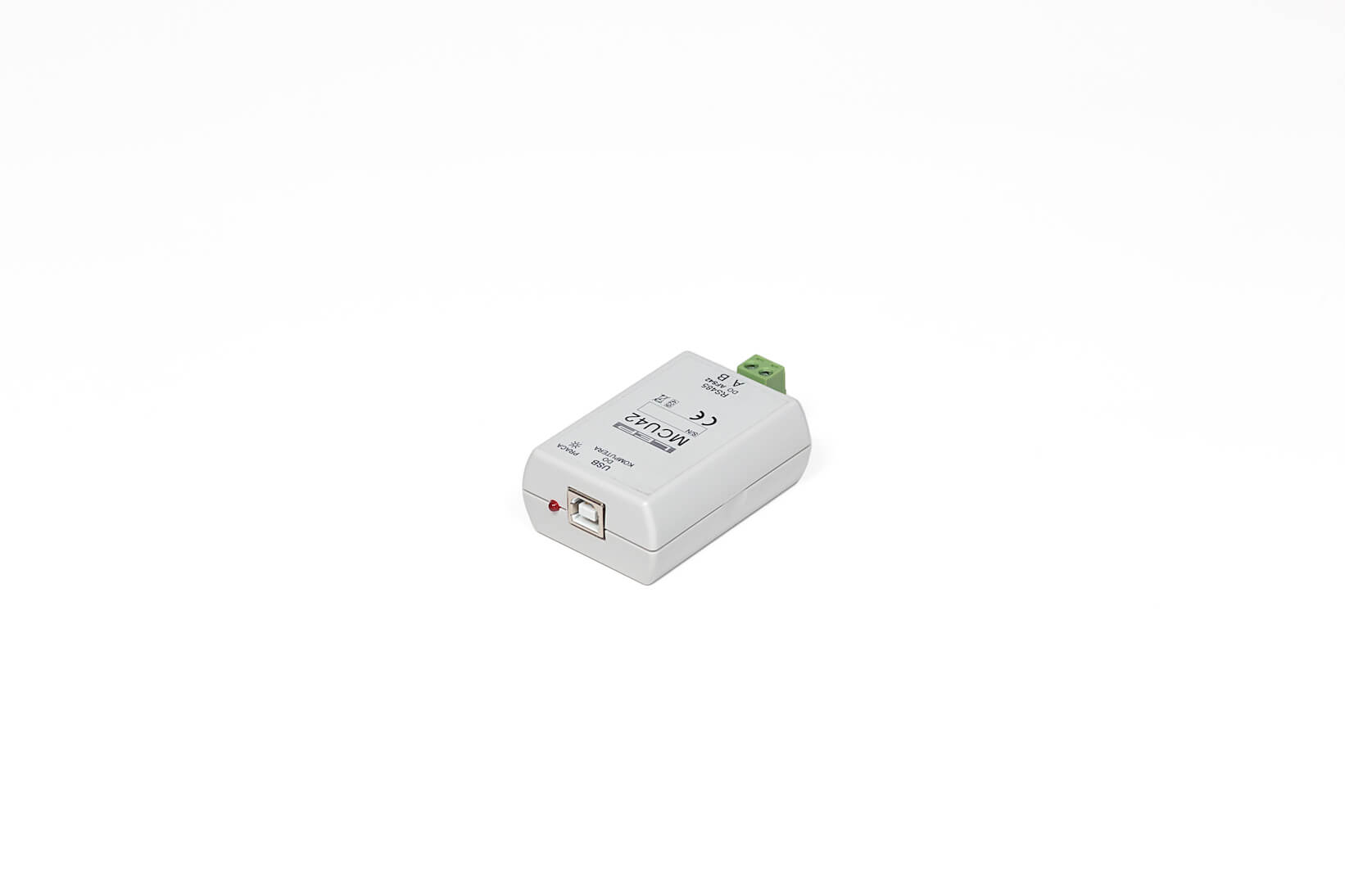
MCU42 converter for connecting the AFS42 control panel to a computer via USB port
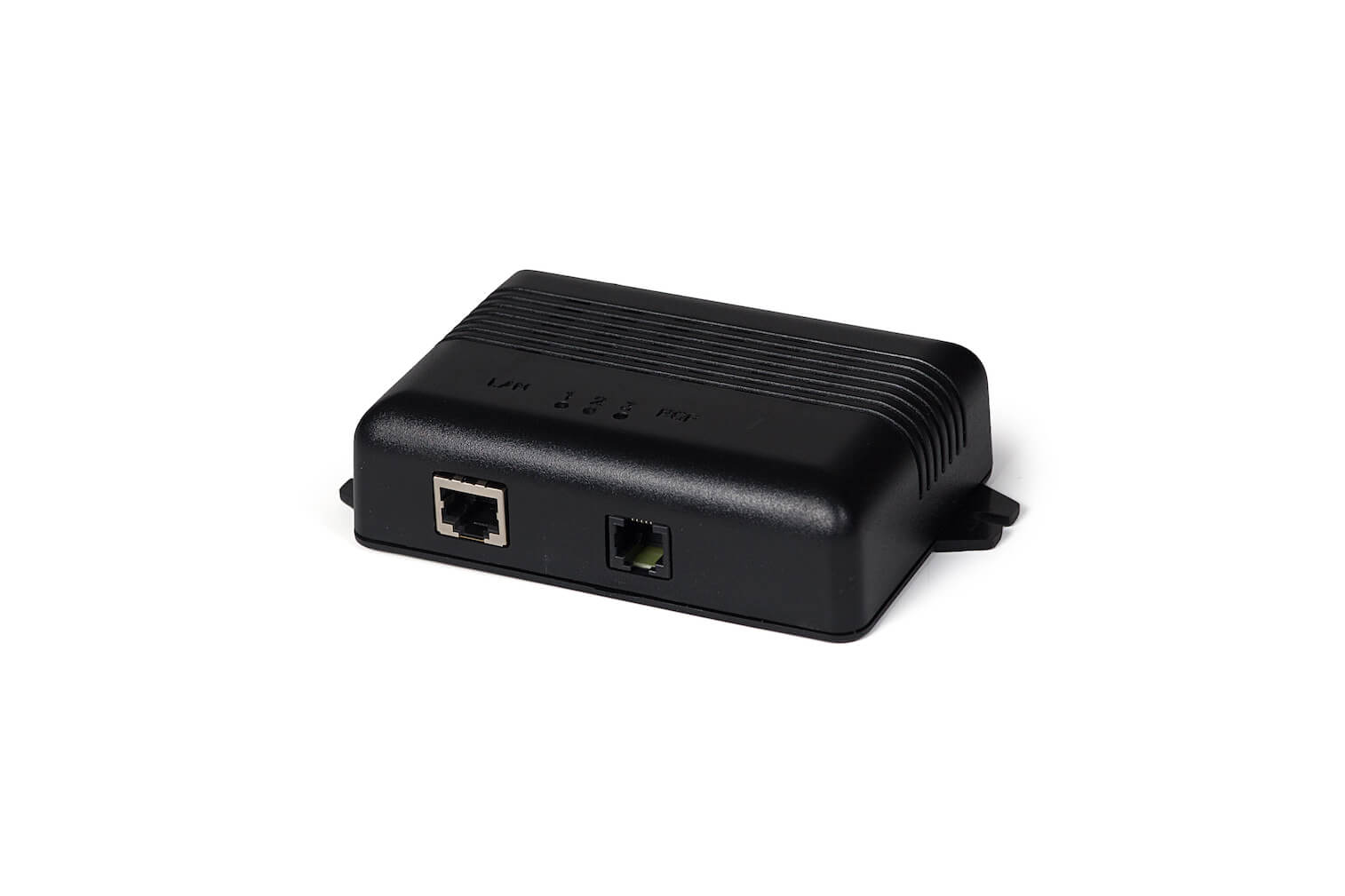
After connecting the control panel to the computer, it is possible to download (and print) events registered in the control panel memory. The AFS42 program working in the Windows operating system is used for this purpose.
The AFS42 program allows you to view the status of the control panel and remotely use the panel keys from the PC.
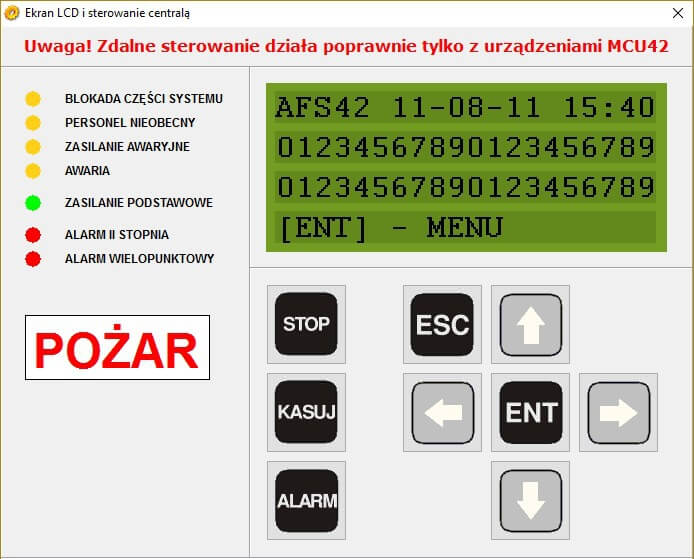
MMG42 – GSM Monitoring Module – is a device enabling monitoring of the status of the fire control panel AFS42 using the GSM mobile network. In the event of detecting a failure or alarm event, it sends an SMS message or makes a telephone call to one or more telephone numbers configured in the device’s memory (up to 8 numbers).
It is possible to choose the scope of the information provided:
- choose a range of addresses
- select zone range
- choose the type of reported failures
- selection of alert levels
The MMG43 module also enables remote control of the control panel by sending an SMS with the content “ALARM”, “CLEAR” and “STOP” from an authorized telephone (alarms can be confirmed and cleared).
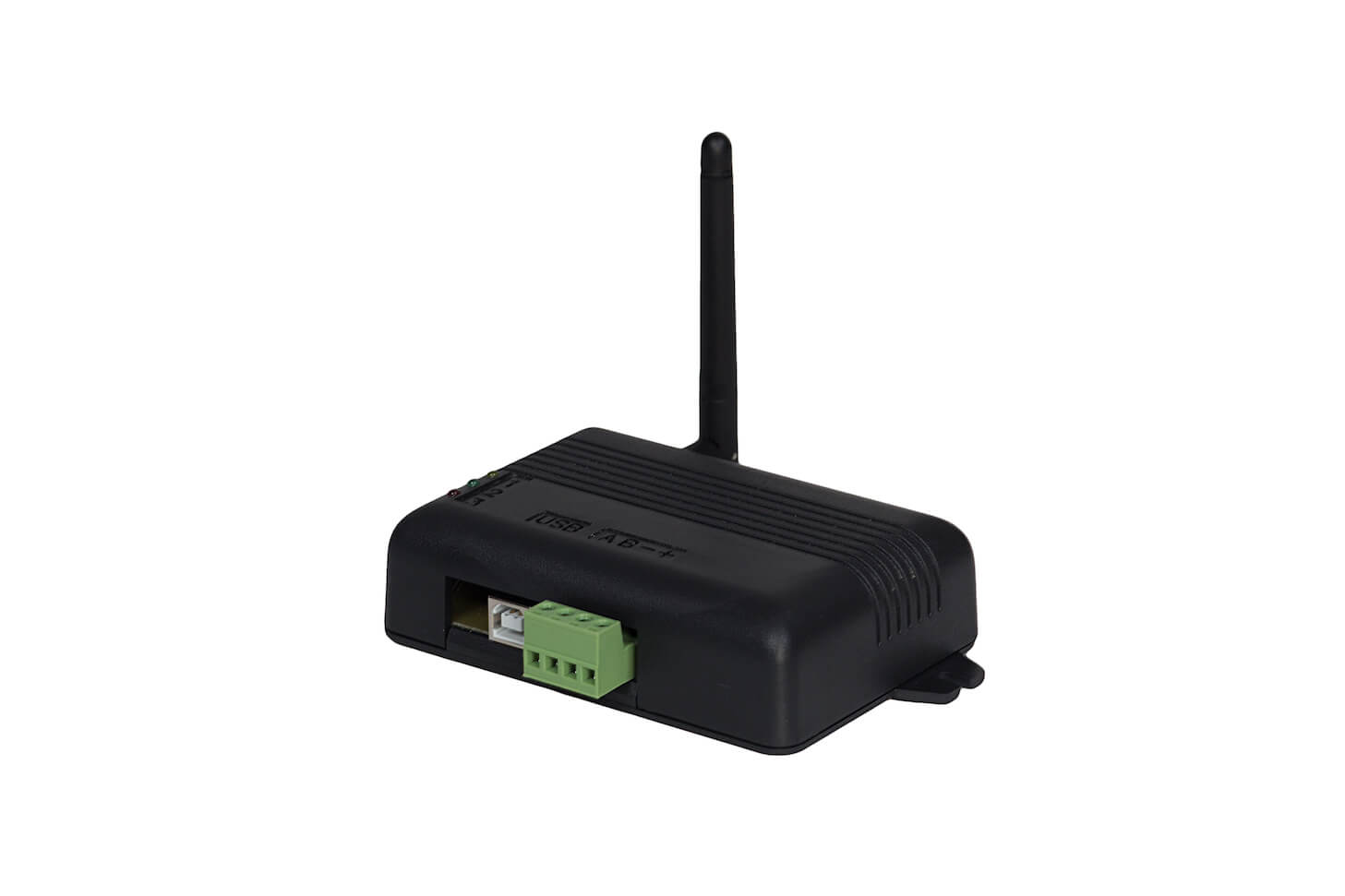
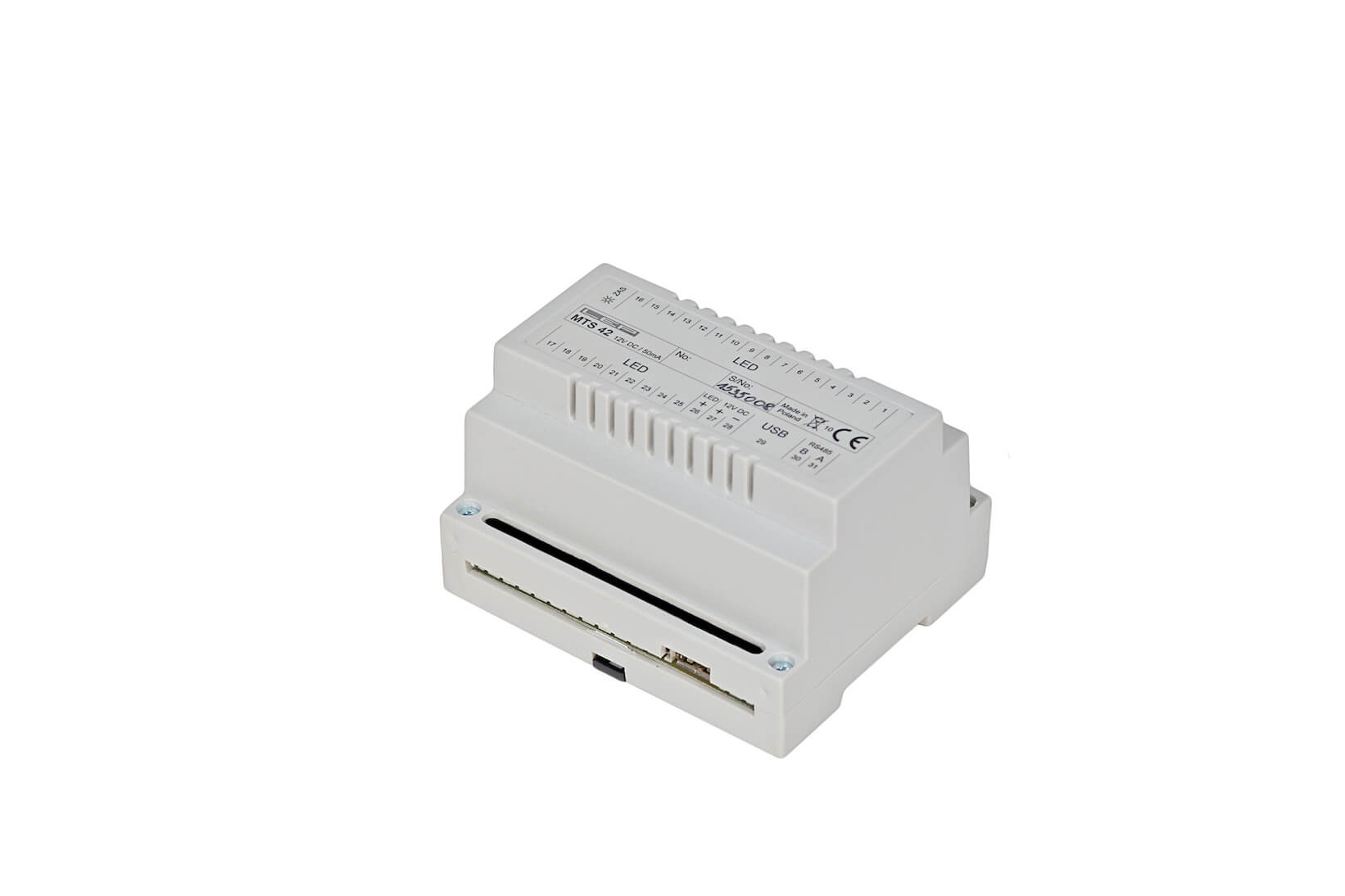
MTS42 – Synoptic Table Module – is designed to support synoptic boards or other indicator devices, used to signal the status of individual parts of the AFS42 system (e.g. a board with LEDs with room names). The MTS42 is responsible for processing the information sent by the AFS42 control panel and controlling the outputs to which the indicators are connected. MTS42 distinguishes three states of AFS42 system elements (addresses and zones) – failure, 1st stage alarm and 2nd stage alarm. In addition, MTS42 is able to signal special states and general failures of the control panel.
UW can also be configured as inputs to control the activation of other external devices or as general information inputs. =”right-to-left”]
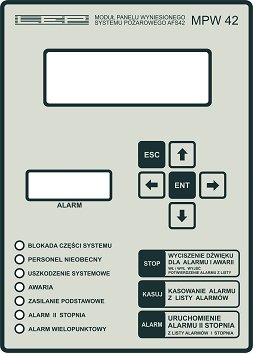
MPW42 – Repeater Panel Module – enables control and supervision of the AFS42 system from outside the AFS42 control panel installation site.
The MPW42 repeater panel module works fully automatically and does not require ongoing maintenance other than connection and appropriate configuration of the AFS42 control panel.
Any signals appearing on the main panel of the AFS42 control panel will be visible on the MPW42 repeater panel. The signals and functions of the buttons work simultaneously on the repeater panel and the control panel. The operation of the AFS42 system can be managed from both devices in parallel.
The rules for designing SSP systems are specified in the Technical Specification PKN-CEN/TS 54-14:2006 Fire alarm systems – Part 14: Guidelines for planning, design, installation, acceptance, operation and maintenance.
Many publications issued as standards by the Scientific Research Center for Fire Protection – National Research Institute (www.cnbop.pl) or guidelines of the Association of Fire Engineers and Technicians (www.sitp.home.pl) greatly facilitate the design of an SSP system.The LEP company is a manufacturer of AFS42 system components. It does not design, install or service SSP systems. However, we can help you contact companies offering the above-mentioned services.


